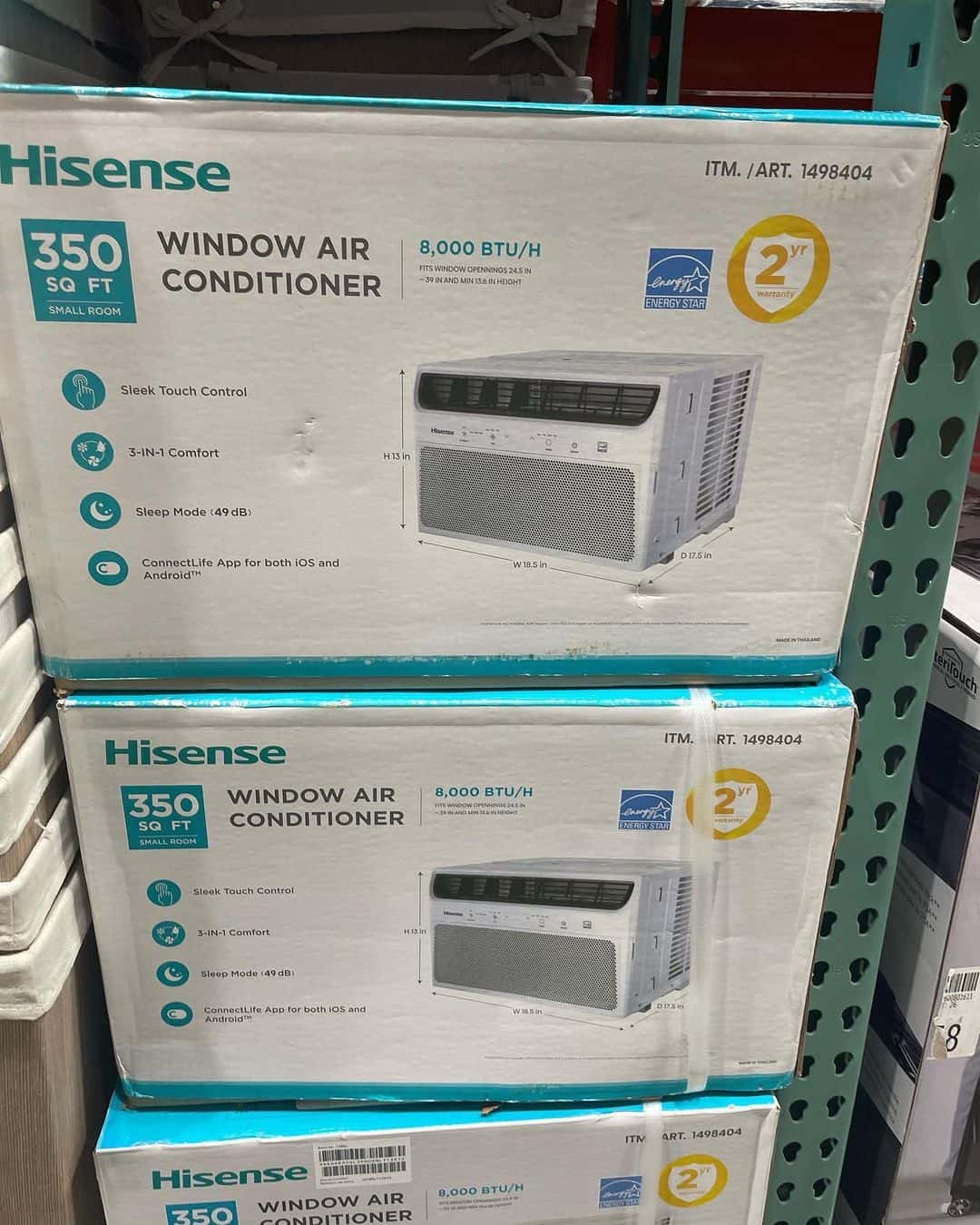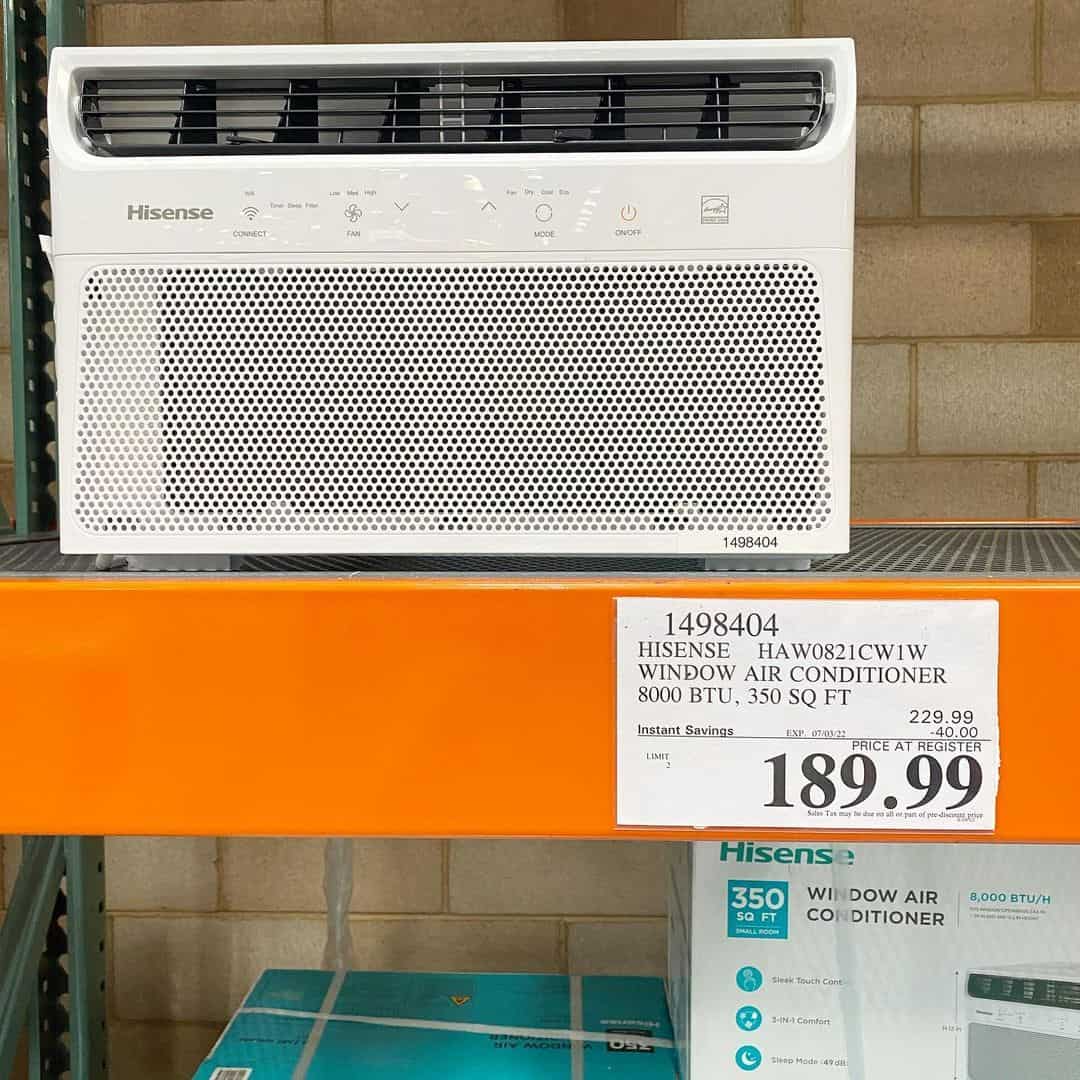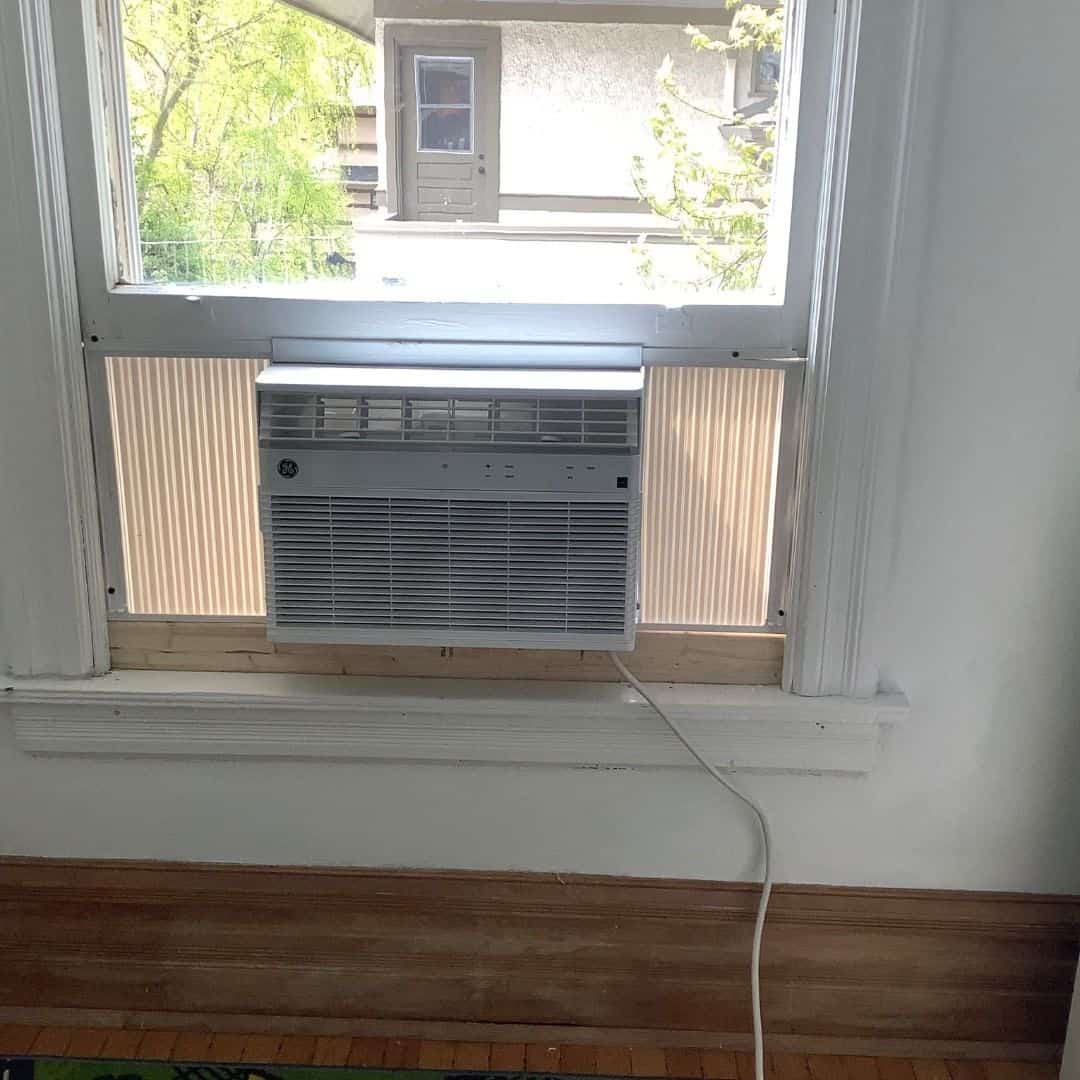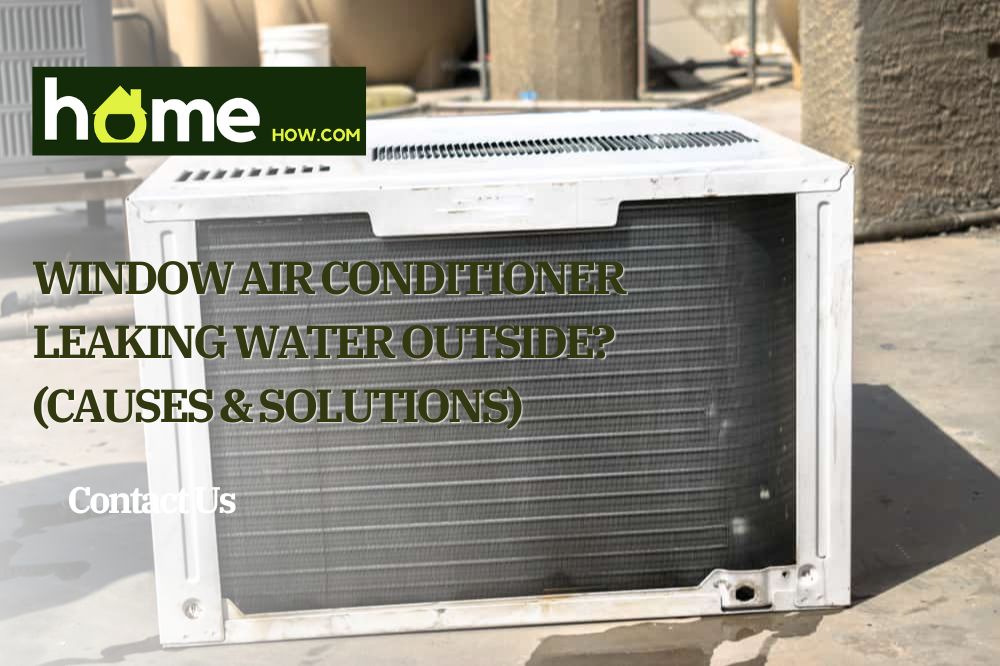Window air conditioners provide relief from the hot summer heat, but if your unit is leaking water, it can be problematic and frustrating. Water dripping from window AC units is caused by several factors, including clogged or overflowing drain pans, improper installation, dirty air filters, low refrigerant levels, and a broken condensate pump.
This article will explore the most common reasons why window AC units leak water outside and how to fix it.
Understanding How Window Air Conditioners Work
Window air conditioners use refrigerant gas to remove heat and moisture from the air in your home. This refrigerant is circulated through a loop that consists of an evaporator coil, a condenser coil, and an expansion valve. The evaporator is inside the unit, while the condenser and expansion valve are usually located at the back of the unit.
The process starts by pulling warm air from your home into the window air conditioner’s indoor evaporator coil, which removes heat and moisture from the air. The cooled air is then pushed back into your home, while the warm and moist air removed from your home is expelled outside via the outdoor condenser coil.
The refrigerant keeps your house cool by absorbing heat from the indoor evaporator coil and releasing it outdoors. The moisture collected by the evaporator coil is then drained away from the unit through a small drain pan and out of the window air conditioner via a condensation drain.
If this process isn’t working correctly, it can lead to excessive moisture build-up that causes water to leak out of the bottom of your window air conditioner.
What Causes Window Air Conditioners to Leak Water Outside?
There are several potential causes of a leaking AC. Some of these issues may be easy to address, while others require professional help.
1. Improper Installation
One of the most common causes of water leakage from window air conditioners is improper installation. If the unit has not been correctly installed, gaps may form between the window frame and the air conditioner, allowing warm air to escape and cold air to enter. This can cause condensation outside the unit, leading to water dripping from the bottom of the unit.
The seals that help keep air from escaping around the edges of the unit may not be adequately secured, allowing air and moisture to escape.
Fix: If you think your window air conditioner is leaking due to an improper installation, the first step is to ensure all the seals and gaskets are properly secured.
You can also check for any gaps or cracks in the unit’s housing, which may be allowing cold air to escape. If the unit is not firmly secured to the window frame, you can use caulk or sealant to fill in any gaps.
2. Low Refrigerant Levels
The refrigerant in an air conditioner is an essential part of the system that helps create the necessary heat transfer to make it work. Its expansion and compression, managed by the compressor, aid in cooling the air.
Lowering the refrigerant levels in a window AC can cause a chain of reactions. Without sufficient pressure, heat can’t transfer as effectively, causing the refrigerant lines to become too cold and freeze.
When these lines thaw out, water leakage may occur inside the house as the refrigerant coil is located on the indoor side of the window air conditioner.
Fix: If there is a refrigerant leak, it must be refilled. A trained and qualified HVAC technician should only do this as they are equipped with specialized tools and knowledge to handle this task.
The technician will examine the unit to find out why the levels were so low in the first place and then refill the system with the correct amount of refrigerant.
3. Clogged Condensation Drain
The condensate drain collects moisture from the evaporator coil and carries it away from the unit. Still, if this drain becomes blocked, it can cause water to back up and overflow the drainage pan, eventually dripping from the bottom of the window air conditioner.
There are several ways in which this drain can become blocked, including dirt and debris buildup or even a simple clog.
If a window air conditioner has been running for an extended period without being cleaned or serviced, dirt and dust particles can collect in the drainpipe, causing it to become clogged. On the other hand, mold or mildew growth inside the unit can also lead to a blocked condensation drain.
Fix: To fix a clogged condensation drain, the first step is to remove any blockages in the drainage pipe. This can be done using an air compressor or a wet/dry vacuum cleaner with a long hose attachment.
Once all obstructions are removed, use a cleaning solution or bleach and water mix to flush out the drainpipe. Sometimes, a professional may need to be called in to unclog the drain pipe if it is blocked or damaged. Once the pipe is clear and unobstructed, replace the air filter and then check for any signs of water leakage again.
In some cases, it may be necessary to disassemble the unit and manually clean out the drain pipe by hand.
4. Malfunctioning Float Switch

Another common cause of a leaking window air conditioner is a malfunctioning float switch. This switch helps to regulate how much water can build up inside the unit before it needs to be drained.
If the float switch gets stuck, it may not be able to properly regulate the amount of water in the unit, causing it to overflow and leak out.
Fixing a Malfunctioning Float Switch
Replacing a float switch can be done relatively quickly and inexpensively.
- First, unplug the air conditioner and turn off any power sources connected to it.
- Locate the float switch, usually found in a hole in the back of the unit.
- Carefully disconnect it from its housing and remove it from the unit.
- Take the faulty float switch to a hardware store and get the exact replacement part.
- Once you have the new switch, reattach it in place of the old one using the same connections.
- Finally, turn on the power sources and plug in your window air conditioner again. The malfunctioning float switch should now be appropriately replaced and no longer leaking.
5. Dirty Air Filters
Dirty air filters can also cause your window AC unit to leak water outside.
When the filter is clogged, it obstructs the airflow and prevents proper cooling of the evaporator coil. This results in an accumulation of moisture from condensation, which then overflows and leads to a leak.
Cleaning Air Filters
To avoid water dripping from a window air conditioner due to clogged air filters, cleaning the filter regularly is essential.
This can be done by first turning off all power sources connected to the unit and removing the filter from its housing.
After that, take it outside and spray it with a hose to eliminate dirt and debris. Once the filter is clean, you can put it back in its housing, turn on the power sources, and set your thermostat to its desired setting.
6. Broken Condensate Pump
The condensate pump removes the condensation water that accumulates in the air conditioner’s drainage pan. This water is then sent to the drainage pipe that works with a sump pump. Water will accumulate and leak if this pump is broken or not functioning correctly.
Fix: If you detect that the condensate pump is not working, you must fix it immediately.
To do this, turn off the power to the air conditioner, drain any remaining water from the unit, disconnect the water lines and wiring, and remove the old pump. Then install a new one according to the manufacturer’s instructions.
Other Potential Issues

Your AC unit may leak water outside for a few other reasons. These include:
1. Faulty Thermostat
A faulty thermostat can lead to an overcooling of the air conditioner, and thus more condensation builds up, resulting in a water drip outside the unit.
2. Loose Connections
Over time, connections between air conditioning system components may become loose or damaged due to age or wear. This can lead to leaks and the need for repair or replacement.
3. Excess Humidity
If there is too much humidity in the air, it can cause condensation inside and outside the window unit, resulting in leaks. To prevent this from happening, you can invest in a dehumidifier or try using a window fan to help reduce excess humidity.
4. Broken Drain Tray
If there is a crack or hole in the drain tray, water can escape from the unit, resulting in a drip outside.
5. Faulty Fan Motor
The fan motor is responsible for moving air over the evaporator coil of the window unit. If it is not working correctly, it can accumulate moisture that eventually overflows and causes a leak. To repair this issue, you may need to replace the fan motor.
Maintenance Tips for Preventing Leaks from Window Air Conditioners

Window air conditioners require regular maintenance to prevent leaks. This includes everyday tasks such as cleaning or replacing filters, inspecting the float switch and condensate pump, and checking for worn sealant. Here are some specific tips:
- Clean or replace the air filter regularly to ensure proper airflow and prevent moisture buildup.
- Inspect the float switch monthly and replace it if it is not working properly or showing signs of wear and tear.
- Ensure the condensate pump is functioning correctly by checking its wiring connections and power source. If necessary, then replace it.
- Check the sealant around the unit periodically and repair any damaged sections.
- Check that the thermostat settings are correct and not causing excess condensation to form.
- Beware of humidity in basement rooms, as this can increase the risk of leaking.
- Make sure all fan blades are spinning correctly to ensure proper airflow.
- Clear debris around the unit, including leaves and dirt, to prevent clogs in the drain pipes.
- Check that the drain hole is clear of any obstructions and repair it if necessary.
Final Thoughts
Leaks from window air conditioners can be a significant problem. If you want to keep your home cool and leak-free, take the necessary steps to ensure regular maintenance of the unit.
Following the tips outlined above will prevent leaks and keep your air conditioning unit running smoothly for years to come.
It is necessary to be aware of the signs of a leak, such as water stains on walls and floors or increased energy bills. If you notice any of these symptoms, contact a technician to diagnose the issue and take care of necessary repairs.
